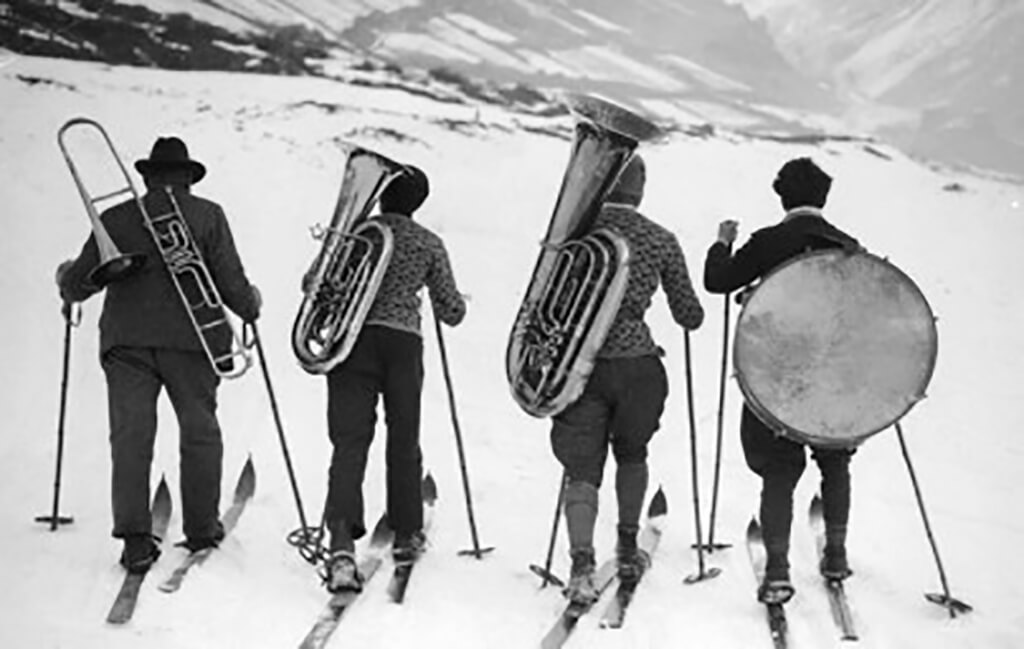
The Music and Health Research Collaboratory Colloquium. Faculty of Music, University of Toronto, March 28, 2017
When Sondra Radvanovsky gave the Riki Turofsky Master Class in Voice at the University of Toronto Faculty of Music in 2015, she told one of the performers that “people say we’re singers, but we’re really athletes.” This was after she had the young singers perform such feats as squat down at the rear end of the piano and pretend to lift it, or imitate a gorilla walk, swinging arms heavily forward, in order to locate and activate muscles that would support the breath necessary to produce a powerful sound. Had he been in the audience that day, Dr. Luc Tremblay, Associate Professor and Associate Dean of Research at the Faculty of Kinesiology and Physical Education, would have been intrigued. Tremblay studies the acquisition of motor skills, as well as the development of expertise in coaching and teaching those skills. This week, at the Music and Health Research Collaboratory Colloquium, he posed the question: “ Should Sport and Music Team Up?”
Motor learning refers to a process that enables a person to acquire the ability move in an intentional way that becomes relatively permanent. As our earliest motor learning takes place during the first year of life, we do not remember what a complex, practiced and hard earned skill it was to learn to walk, but all later motor learning is the result of a similar process of practicing a motion until it is competent and consistent. When the skills are highly specific and require levels of refinement, they can only be taken to an elite level with the aid of an expert or a coach. Much of Tremblay’s research considers how experts can help athletes move from one level of skill to a more advanced level, how to move beyond plateaus and what the optimal process is for skills acquisition.
On the way to understanding how to develop champion level athletic performance, Kinesiologists study every movement imaginable, not just the movements they want their athletes to perfect. Tremblay’s presentation touched on everything from cigar rolling in Cuba to pouring milk to walking on a balance beam to powerlifting squats and more. He also invited the audience to execute a few motor sequences to experience the motor process he was elucidating. We discovered that we relied on visual feedback during a particular movement sequence to hit our target, for example. This relatively simple task of accurately moving my index finger towards the inside of my elbow reminded me of some of the trickier keyboard maneuvers I’ve had trouble with, when the piano piece required rapid and accurate finger movement over several octaves. A trombonist in the audience spoke of a common tendency for performers to have a sense of the location of one of the positions they play as a result of touching the bell of the trombone with one hand when they extend the slide to a particular stop. Tremblay did not use any examples of musical motor skills, but the general principles of motor learning were easy to apply, and it seemed as if many in attendance were thinking of their particular instrument.

Tremblay’s answer to the question he posed in the title of his presentation is a resounding YES, music and sports should team up. “Music and sports are the two major domains of motor skill on campus,” explained Tremblay. “By teaming up, we have the opportunity to collect large data sets, to understand more about motor skill acquisition and very importantly, to reduce injury.” This viewpoint was augmented by Professor Michael Thaut, Director of MaRHC, who commented that until fairly recently “music has been taught on the artistic model, not the scientific one. The kinesiology, scientific model could be far more enlightened. We need to identify the proprioceptive templates for each instrument, and we would benefit greatly by understanding the corrections systems that musicians use when learning so that we provide effective feedback to students.”
It appears that the understanding of learning, movement and the development of expertise are burgeoning right now, in fascinating and exciting ways. The scholars at the frontiers of this research are in faculties that devote themselves to professional levels of performance. Of course, this is good for elite performers, but it’s also good for amateurs. Eventually, these advances get transferred into our domain, and we benefit as well.
We should not forget that every single professional musician and elite athlete started his or her pursuit as an amateur, early in life, and then decided to take it to another level. This is true of most expert performers, from chess players to sculptors: most of them start out on their road to advanced performance as preschoolers, when they begin to play at the particular interest. Tiger Woods had a toy golf club when he was nine months old. Mario Lemieux played pretend hockey in his stocking feet using a bottle cap and a wooden spoon. Some chess champions played with the pieces long before they were able to learn about the formal rules of how they move on the chessboard. What this suggests is that in order to produce excellent performers, we need to cultivate amateurs in effective and supportive ways.
But more than that, amateurs who are coached effectively and supported sensitively, are much more likely to maintain their pursuits throughout their lives whether they reach competitive levels or not. At a time when more and more people are devoting their waking hours to looking at screens, we need to make the development of active, engaged and recreational pursuits that much more appealing and rewarding. If sports and music can team up to that end, everyone will benefit.
Sidebar: Science-based Practice Tips
- Studies from kinesiology have yielded a few nuggets of wisdom that deserve to be better known. Here are a few:
- Repetition is important for learning, but the timing of the repetition is critical: take breaks during skill acquisition—consolidation takes place during the breaks.
- Challenge a skill that begins to become automatic—if it turns into a rote performance the ability to make rapid adjustments is compromised.
- Less can be better when it comes to visual input during performance of some motor sequences.
- A skill that is really entrenched may not be easily transferred to a new context. Practicing in the same place on the same instrument is not optimal to create really reliable and transferable performance.
- Varying practice routines reduces injury.
- Staggered feedback is good but constant feedback reduces performance; there is some evidence that the feedback a student asks for is the most effective of all.



